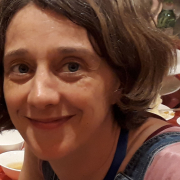
Copyright : Laboratoire LEMAR- 2018
Sabine Roussel
Britanny region
Bourse de thèse ARED, Région Bretagne et Ecole doctorale EDSML
Start Date
04/04/2025
End Date
04/04/2025
Abalone are marine gastropods found in most continents, with more than 56 species described worldwide. The European species distribution extends from the Channel Islands to Senegal and is found in sheltered to exposed rocky shores between the intertidal and littoral zone where it lives a cryptic life mostly between 10 m depth and sea surface. The commercial culture of Haliotis tuberculata has recently started in Europe. Aquaculture production in France is mostly located in Brittany and remains low with less than 10 tons being marketed each year, for regional market or luxury restaurant. The fisheries in Europe do not exceed 50 tons per year, mainly based in Britany.
The worldwide demand for this valuable shellfish species has exceeded its supply resulting in increased fishing pressure on the fishery which in turn has led to a decline in wild stocks. Over-exploitation by recreational fishing of the European abalone in the northern limits of its range, the British Channel Islands and the French Brittany coast, and the subsequent depletion in natural stocks during the second half of the twentieth century has resulted in increasingly strict fishery legislation and reduced landings. Reasons for this stock decline and in some part of the world collapse of many abalone species are not clear, being attributed to a combination of factors such as over-fishing, pollution and disease. Stock enhancement and ranching program might be a solution to restore and develop a sustainable industry based on the local species.
This project will consist in studying the H. tuberculata produced in hatchery during after re-seeding in order to understand the acclimation and adaptation process of the species during the stock enhancement program. The aim of this project is to improve our understanding of both technical and scientific issues before planning larger enhancement / ranching programs. The approach will focus on the animal, mostly based on its behaviour and genetic diversity, combined with experimental re-seeding experiment in the wild (algal resources, hiding place, predator presence, …). Experiments will be carried out in Britany, focusing on Brest area where the marine environment is well known.

 Archives
Scroll to top
Archives
Scroll to top